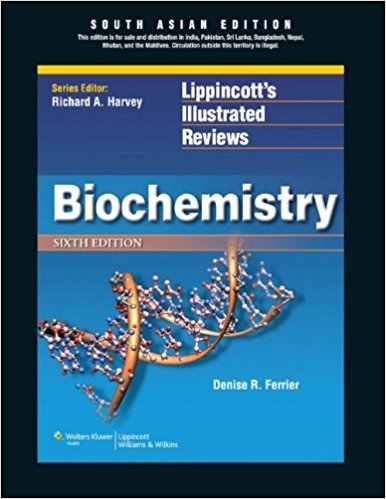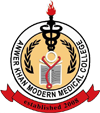Anwer Khan Modern Medical College
Library Management System

| Title: | Lippincott's illustrated reviews: biochemistry |
| Author Name: | Denise R. Ferrier. |
| Author Sur Name: | FERRIER, Denise R. |
| Other's Author Name: | Richard A. Harvey [Series Editor] |
| Author information: |
|
| Edition/Published: | 6th ed. _New Delhi : LWW , 2014 |
| New to this edition: |
|
|
Physical Description: viii, 552p., : color illustrations, tables, chart, graphs.; 27.5cm ...( Lippincott's illustrated reviews ) |
| Notes | Includes Index. |
| Includes Index: | P. 522-552 |
| ISBN No's: | 978-81-8473-959-6 |
| Bar Code's: | |
| Shelf Location's: | 67 |
| Classification | |
| Subject: | Biochemistry--Outlines |
| Dewey Class No: | 612.3/9 |
| Letter Call No: | F41l |
| LC Classification: | QP514.2 .C48 2014 |
| Other's Book Information | |
| Book ID No: | 1414 |
| Total Books: | 1 |
| Date of collection's: | 29-Dec-2013 |
| Donation / Purchase: | Purchase |
| Language: | English |
| Status: | Available |
| Department: | BioChemistry |
| Synopsis: |
|
| Review: |
|
| Description: |
|
| Key Features: |
|
| Summary: |
|
| Abstract: |
|
| Content: |
UNIT I: Protein Structure and Function Chapter 1: Amino Acids 1 Chapter 2: Structure of Proteins 13 Chapter 3: Globular Proteins 25 Chapter 4: Fibrous Proteins 43 Chapter 5: Enzymes 53 UNIT II: Bioenergetics and Carbohydrate Metabolism Chapter 6: Bioenergetics and Oxidative Phosphorylation 69 Chapter 7: Introduction to Carbohydrates 83 Chapter 8: Introduction to Metabolism and Glycolysis 91 Chapter 9: Tricarboxylic Acid Cycle and Pyruvate Dehydrogenase Complex 109 Chapter 10: Gluconeogenesis 117 Chapter 11: Glycogen Metabolism 125 Chapter 12: Metabolism of Monosaccharides and Disaccharides 137 Chapter 13: Pentose Phosphate Pathway and Nicotinamide Adenine Dinucleotide Phosphate 145 Chapter 14: Glycosaminoglycans, Proteoglycans, and Glycoproteins 157 UNIT III: Lipid Metabolism Chapter 15: Dietary Lipids Metabolism 173 Chapter 16: Fatty Acid, Ketone Body, and Triacylglycerol Metabolism 181 Chapter 17: Phospholipid, Glycosphingolipid, and Eicosanoid Metabolism 201 Chapter 18: Cholesterol, Lipoprotein, and Steroid Metabolism 219 UNIT IV: Nitrogen Metabolism Chapter 19: Amino Acids: Disposal of Nitrogen 245 Chapter 20: Amino Acid Degradation and Synthesis 261 Chapter 21: Conversion of Amino Acids to Specialized Products 277 Chapter 22: Nucleotide Metabolism 291 UNIT V: Integration of Metabolism Chapter 23: Metabolic Effects of Insulin and Glucagon 307 Chapter 24: The FeedÐFast Cycle 321 Chapter 25: Diabetes Mellitus 337 Chapter 26: Obesity 349 Chapter 27: Nutrition 357 Chapter 28: Vitamins 373 UNIT VI: Storage and Expression of Genetic Information Chapter 29: DNA Structure, Replication, and Repair 395 Chapter 30: RNA Structure, Synthesis, and Processing 417 Chapter 31: Protein Synthesis 431 Chapter 32: Regulation of Gene Expression 449 Chapter 33: Biotechnology and Human Disease 465 Appendix: Clinical cases 489 Index 522 |
